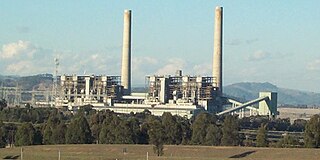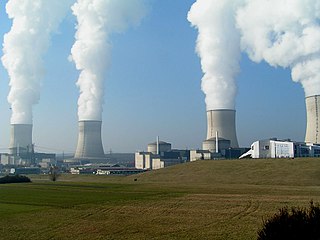
The following outline is provided as an overview of and topical guide to religion:
This is a list of lists of universities and colleges by country, sorted by continent and region. The lists represent educational institutions throughout the world which provide higher education in tertiary, quaternary, and post-secondary education.

This is a comprehensive list of lists of rivers, organized primarily by continent and country.
The following are the regional bird lists by continent. Some are full species lists, others, particularly continental lists, have just the families.

In the electricity sector in the United Kingdom the National Grid is the high-voltage electric power transmission network covering Great Britain, connecting power stations and major substations and ensuring that electricity generated anywhere on it can be used to satisfy demand elsewhere. The network covers the great majority of Great Britain and several of the surrounding islands. Notably, it does not cover Ireland; Northern Ireland is part of a single electricity market with the Republic of Ireland.
A central government is the government that holds absolute supremacy over a unitary state. Its equivalent in a federation is the federal government, which may have distinct powers at various levels authorized or delegated to it by its federated states, though the adjective 'central' is sometimes also used to describe it.

Liddell Power Station is a coal-powered thermal power station with four 500 megawatts (670,000 hp) GEC (UK) steam driven turbo alternators for a combined electrical capacity of 2,000 megawatts (2,700,000 hp). However, as at April 2018, its operating capacity has been assessed at 1,680 megawatts (2,250,000 hp). Commissioned between 1971 and 1973, the station is located at Lake Liddell near Muswellbrook, in the Hunter Region, New South Wales, Australia.

The Murray Region Hydroelectric Power Stations refers to two of seven hydroelectric power stations, both located near the town of Khancoban in the Snowy Mountains region of New South Wales, Australia. The two power stations are part of the Snowy Mountains Scheme, a vast hydroelectricity and irrigation complex constructed in south-east Australia between 1949 and 1974 and now run by Snowy Hydro. Although both power stations are physically located in New South Wales, since 1 July 2008 all power generated has been allocated to the Victorian region of the National Electricity Market. The stations are not located on the Murray River.

Cochrane Dam is a minor earthfill embankment dam with concrete spillway across Georges Creek, located in the South Coast region of New South Wales, Australia. The main purpose of the dam is to supply water for hydro-power at the downstream Brown Mountain Power Station and for irrigation purposes. The impounded reservoir is called Cochrane Lake.

Nuclear power plants currently operate in 31 countries. Most are in Europe, North America, East Asia and South Asia. The United States is the largest producer of nuclear power, while France has the largest share of electricity generated by nuclear power. In 2010, before the Fukushima Daiichi nuclear disaster, it was reported that an average of about 10 nuclear reactors were expected to become operational per year, although according to the World Nuclear Association, of the 17 civilian reactors planned to become operational between 2007 and 2009, only five actually came on stream. Global nuclear electricity generation in 2012 was at its lowest level since 1999.
A grid-tied electrical system, also called tied to grid or grid tie system, is a semi-autonomous electrical generation or grid energy storage system which links to the mains to feed excess capacity back to the local mains electrical grid. When insufficient electricity is available, electricity drawn from the mains grid can make up the shortfall. Conversely when excess electricity is available, it is sent to the mains grid.

Wangi Power Station is a heritage-listed former coal-fired power station at Wangi Wangi, City of Lake Macquarie, New South Wales on Lake Macquarie. The power station operated between 1956 and 1986 and supplied electricity to New South Wales. It was once the largest in the state. The 12,000 square-metre building was listed on the New South Wales State Heritage Register on 2 April 1999.

Energy in Armenia describes energy and electricity production, import and consumption in Armenia.
Lists of mountains can be organized by continent and more specifically by country and province/state:

Geehi Dam is a major ungated rockfill embankment dam with an uncontrolled morning glory spillway spillway across the Geehi River in the Snowy Mountains of New South Wales, Australia. The dam's main purpose is for the generation of hydro-power and is one of the sixteen major dams that comprise the Snowy Mountains Scheme, a vast hydroelectricity and irrigation complex constructed in south-east Australia between 1949 and 1974 and now run by Snowy Hydro.











